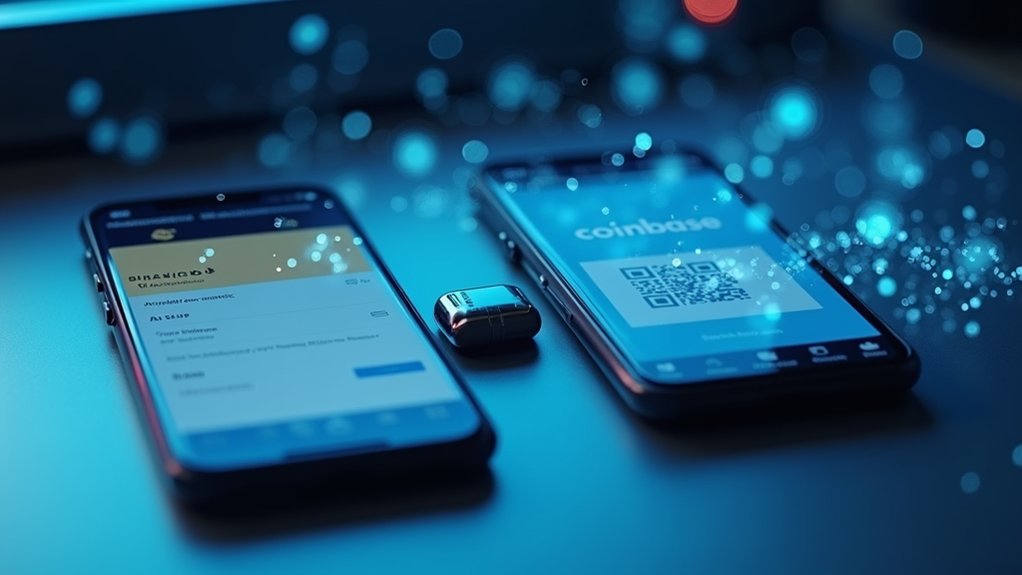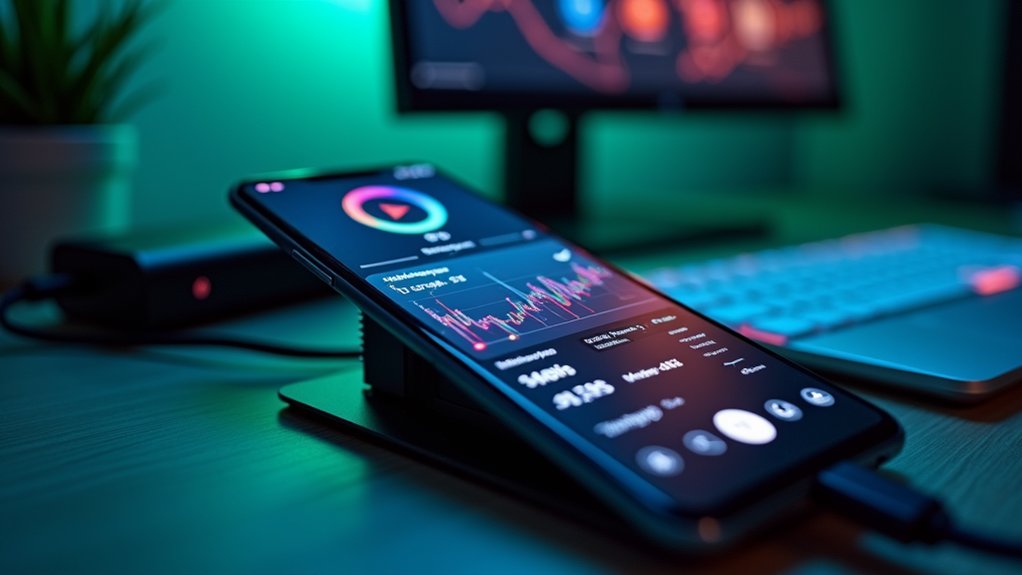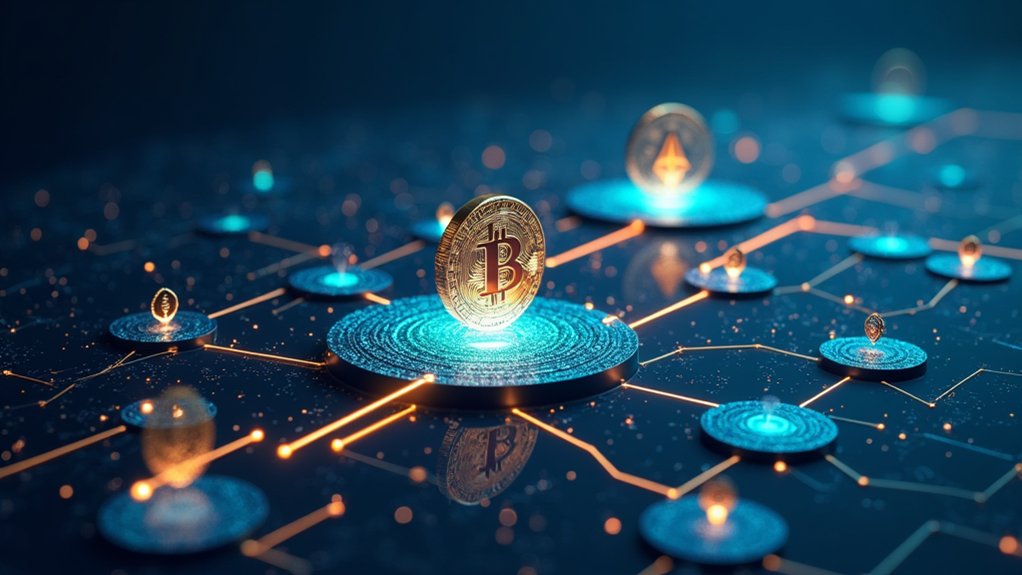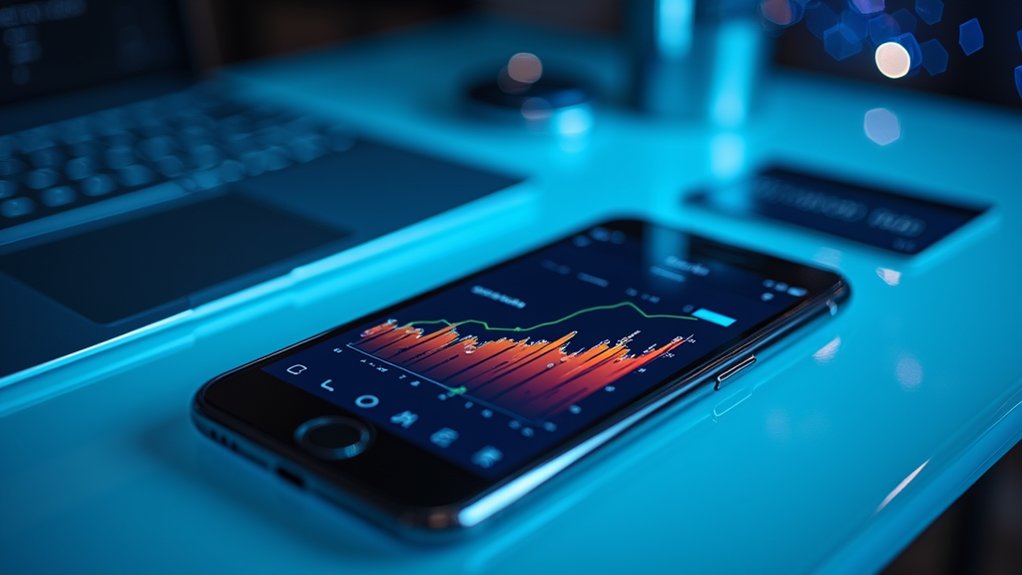Transferring cryptocurrency from Binance to Coinbase requires several sequential steps for secure execution. Users must first verify both accounts, then obtain the specific cryptocurrency's wallet address from Coinbase's Send/Receive section. On Binance, navigate to Withdraw, paste the Coinbase address, select the correct network, and confirm the transaction after reviewing all parameters. Most transfers complete within 5-30 minutes, depending on network congestion and cryptocurrency type. The following thorough guide clarifies additional security considerations and troubleshooting protocols.
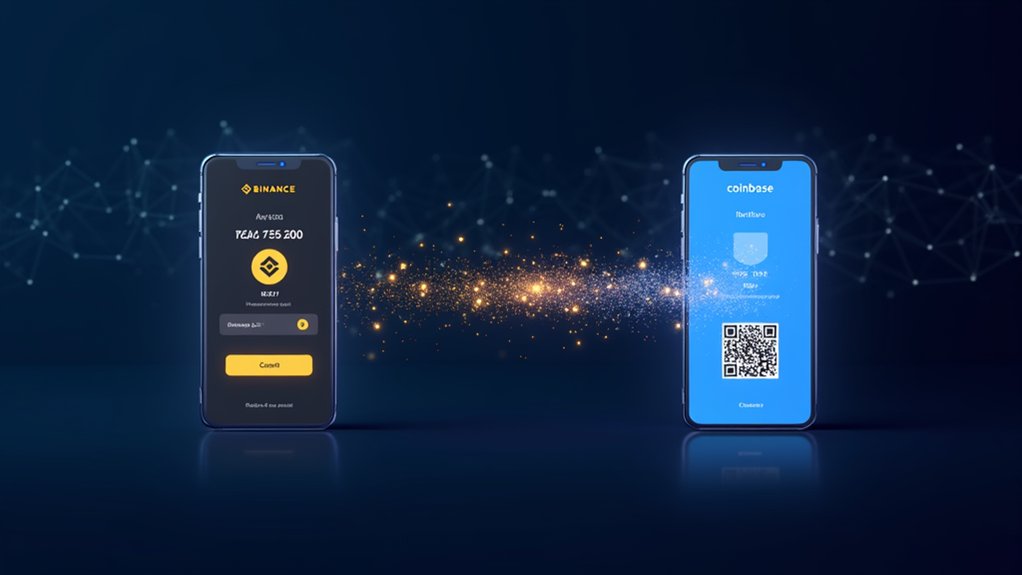
Transferring cryptocurrency between exchanges, particularly from Binance to Coinbase, requires meticulous attention to detail and adherence to specific procedural steps to guarantee successful asset migration. Users must begin by ensuring both exchange accounts have completed verification processes, since withdrawal functionality remains restricted until identity verification protocols are satisfied, thereby safeguarding against unauthorized transactions in accordance with regulatory requirements.
The process commences with the acquisition of a proper destination address from Coinbase, where users must navigate to the "Send/Receive" tab, select the specific cryptocurrency intended for transfer, and activate the "Receive" function to generate the appropriate wallet address. This alphanumeric code, which can be copied via clipboard functionality or captured through QR code scanning, serves as the critical routing information for the blockchain network to process the transfer correctly, thereby necessitating careful verification of network compatibility between the exchanges.
Secure your transfer's destination by generating the precise Coinbase wallet address—your digital map for blockchain navigation.
Following address acquisition, users must access Binance's "Wallet Overview" section, locate the "Withdraw" option for the corresponding cryptocurrency, and precisely paste the previously copied Coinbase address into the designated field. Particular attention must be paid to network selection, since cryptocurrencies often operate across multiple blockchain protocols, where misalignment between sending and receiving networks could result in permanent asset loss, an unrecoverable error within decentralized systems. Binance offers blockchain withdrawal method that maintains privacy by not revealing your Binance account details to external wallet addresses.
Transaction confirmation requires multiple verification layers, including anti-phishing checks and two-factor authentication, particularly for transfers exceeding certain thresholds, followed by an extensive review of all transaction parameters including fees, which fluctuate based on network congestion. Many users transfer their assets to gain access to wider trading pairs available on different exchanges. Direct transfers from Binance to Coinbase can eliminate extra steps and potentially reduce transaction fees compared to using a personal wallet as an intermediary.
Processing times vary considerably across cryptocurrencies, with Ethereum typically confirming faster than Bitcoin due to fundamental blockchain design differences, though most transfers complete within 5-30 minutes under normal network conditions.
Should transactions remain pending beyond expected timeframes, users may reference blockchain explorers for independent verification of transaction status or contact customer support teams at either exchange, providing transaction identification numbers to facilitate resolution of any potential complications that may arise during the transfer process.
Frequently Asked Questions
How Long Does a Binance to Coinbase Transfer Typically Take?
Transfers between Binance and Coinbase typically complete within 30 minutes under normal network conditions, though actual duration varies considerably based on the cryptocurrency involved.
Bitcoin transactions generally require 30 minutes to 2 hours for the necessary six confirmations, while Ethereum transfers often complete within 5-20 minutes.
Network congestion, blockchain type, and verification requirements may extend these timeframes, particularly during periods of high trading volume or market volatility.
Are There Minimum Transfer Amounts Between Binance and Coinbase?
While Binance itself does not impose minimum transfer amounts, Coinbase enforces cryptocurrency-specific thresholds for incoming transfers.
Each cryptocurrency on Coinbase has a designated minimum value (e.g., 0.0001 BTC), which fluctuates in USD terms based on market prices. Users must meet these Coinbase-established minimums when transferring from Binance, and should additionally account for network fees, which vary according to blockchain congestion and are charged separately from the minimum amount requirements.
Which Cryptocurrencies Can't Be Transferred Between These Exchanges?
Several cryptocurrencies cannot be transferred between Binance and Coinbase due to compatibility issues.
These include BCH, ETC, XLM, and XRP, which Coinbase discontinued in February 2023, and tokens on unsupported networks like BNB Smart Chain.
Additionally, assets requiring cross-chain swaps, unlisted tokens that haven't passed Coinbase's review process, and cryptocurrencies tied to discontinued networks present transfer barriers, necessitating third-party wallet migrations for successful transfers.
How Do Withdrawal Limits Affect My Transfer Capabilities?
Withdrawal limits directly impact a user's ability to transfer cryptocurrency between exchanges, since these limits, determined by verification tier status, establish maximum daily or monthly transaction values.
Basic KYC verification on Binance, for instance, allows transfers up to 0.06 BTC daily, while higher verification levels permit greater volumes.
Users attempting large-value transfers must consider these predetermined thresholds and potentially distribute transactions across multiple days to accommodate exchange-imposed constraints.
What Should I Do if My Transfer Gets Stuck?
When a transfer becomes stalled, users should first verify transaction status through block explorers, ensuring network compatibility between platforms.
If confirmations remain at zero after 30 minutes, contacting the exchange's support team becomes essential.
Network congestion, insufficient transaction fees, or liquidity issues may cause delays.
For pending email/phone transfers, cancellation via web interface is advisable, while awaiting epoch changes may resolve staking-related delays for assets like SOL.
